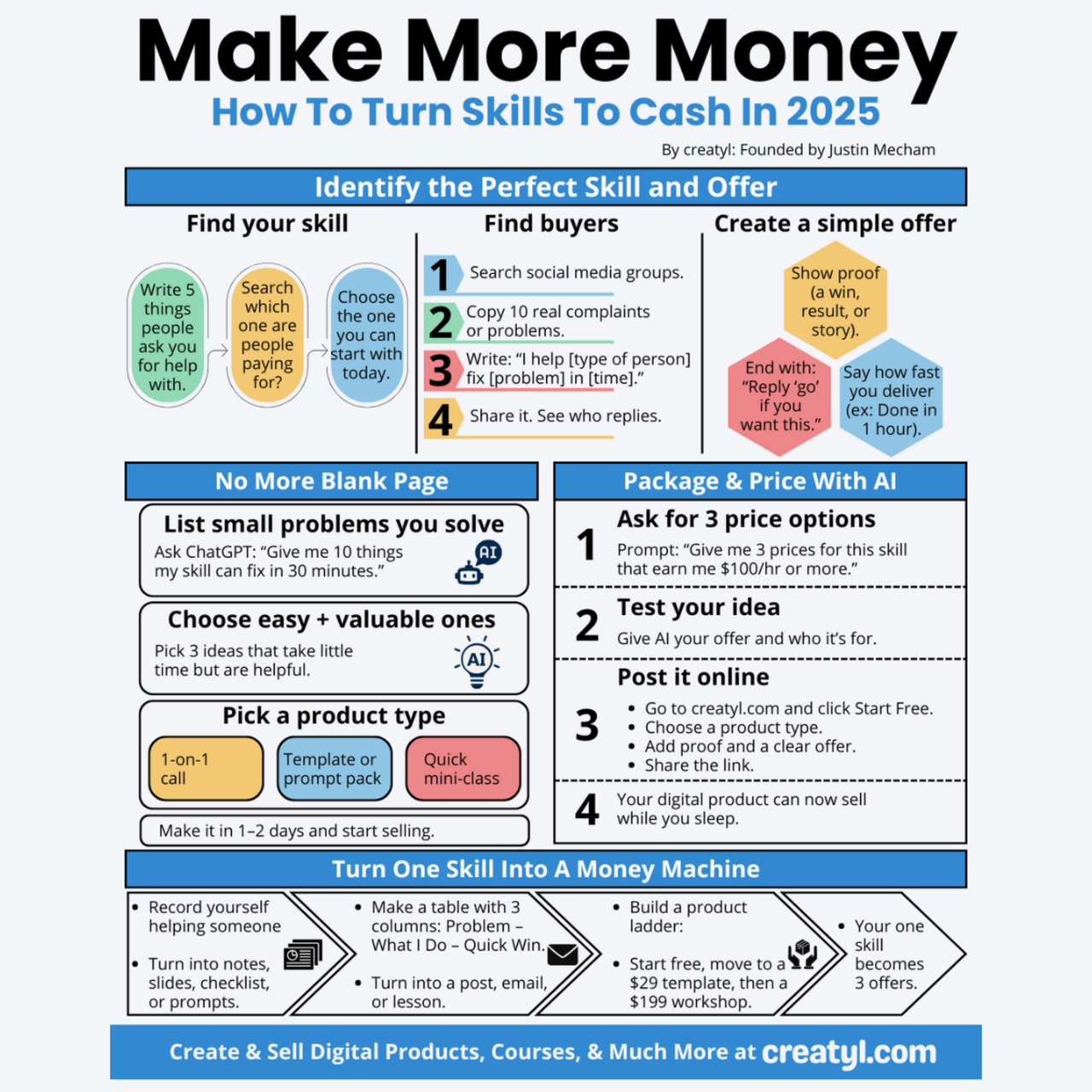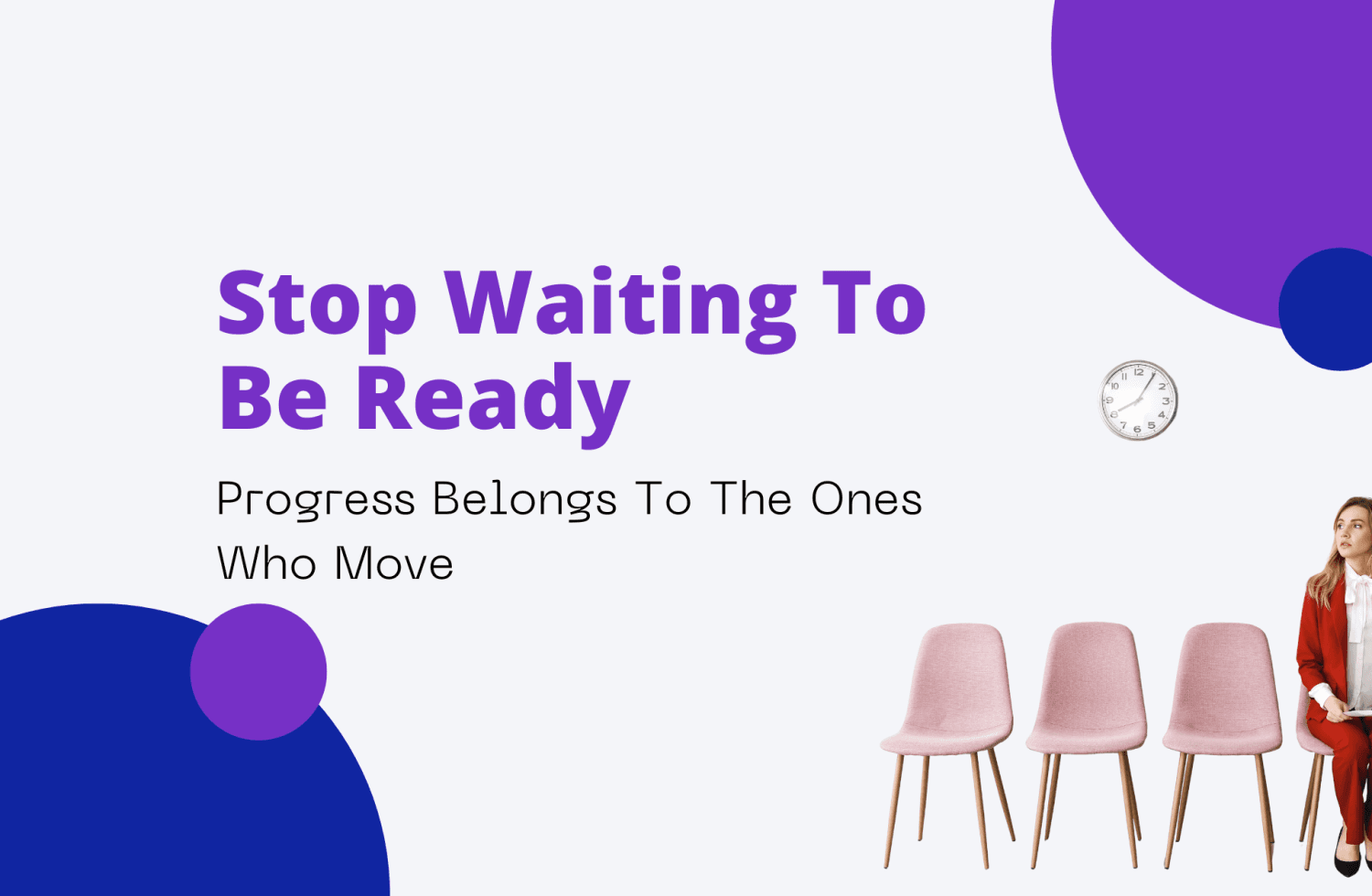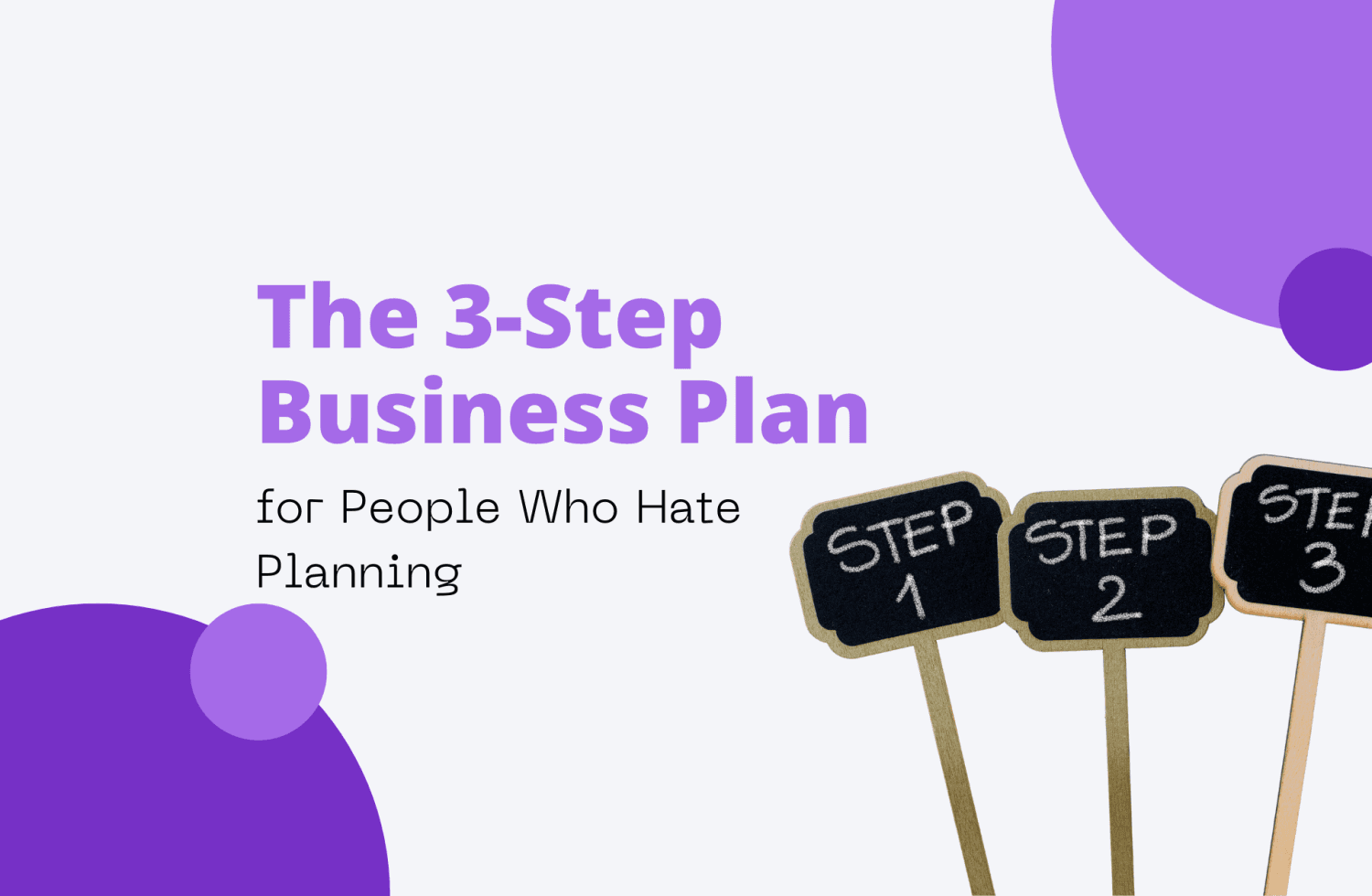If You Want Today's Infographic, Click Here.
Every week, someone probably asks you for help.
Maybe it’s reviewing their resume.
Maybe it’s fixing a slide deck, brainstorming a title, calming them down before a presentation, or explaining something others overcomplicate.
Most people dismiss these moments.
"I’m just helping."
"It only took 10 minutes."
"That wasn’t a big deal."
But those skills—the ones people keep coming to you for—are actually where your product lives.
Helping others is already your business. You just haven’t turned it into something people can buy.
This is how you do that.
Step 1: Use Real Life as Your Market Research
Don’t start with a business idea. Start with your inbox.
Write down 5 things people regularly ask you about. Think small. Think fast. Think real.
If you’re the person they come to when they get stuck, confused, overwhelmed, or behind—you’re not just helpful.
You’re a solution. One they already trust.
Real Example:
A marketing manager noticed people in her company kept asking her how she writes short, high-converting headlines.
She never thought much of it.
But after the fifth Slack message in a month, she realized she had a system—even if she never called it that.
She turned her method into a one-page cheat sheet and shared it as a PDF.
Two people outside her company asked to buy it after someone else posted about it.
That’s not coincidence. That’s clarity.
If people ask you more than once, that’s your research.
Step 2: Spot the Buyers Using Their Own Words
You don’t need surveys.
You need screenshots.
Go to LinkedIn, Facebook Groups, Reddit, or Slack channels and look for 10 real complaints or questions around the skill you wrote down.
Copy their exact words. The frustrations. The confusion. The way they describe the problem, not the polished way you would.
Then, write one sentence:
"I help [type of person] fix [specific problem] in [clear timeframe]."
Real Example:
A freelance UX designer kept losing clients at the proposal stage.
She thought the problem was pricing.
But when she looked at threads in designer groups, she saw dozens of comments complaining about confusing proposals.
People were saying, "Clients ghost me after I send the scope," or "They said it looked messy and unclear."
She rewrote her pitch and posted this:
"I help freelancers fix confusing proposals in 30 minutes so clients say yes faster."
She got 4 DMs within 2 hours. Why? Because she used the buyer's words.
Your buyers already told you what they need. You just need to listen better.
Step 3: Build a Simple, Clear Offer That Doesn’t Overwhelm
You don’t need a full course. Or 10 hours of video. Or branding. Or a logo.
You need a useful offer that people can say yes to.
Here's what to include:
- Show proof: A story, a result, a screenshot, a message.
- Say how fast you deliver: 30 minutes, 24 hours, same day.
- End with: "Reply GO if you want this."
Real Example:
A project manager kept track of every task in a simple dashboard her team swore by.
But other teams kept falling behind.
She got tired of explaining it over and over.
So she recorded a 10-minute video walking through her exact setup, included a screenshot of a before/after timeline, and shared this in a work Slack group:
"I help busy teams get instant clarity with a dashboard that takes 15 minutes to build. Reply GO if you want the template."
Seven people replied. She made a $29 version. People kept buying it.
This wasn’t fancy. It was just helpful—and packaged clearly.
Step 4: Use AI the Smart Way, Not the Lazy Way
AI won't build your product. But it will speed up your thinking.
Ask better prompts like:
- "Give me 10 quick problems my skill solves in 30 minutes."
- "What are 3 price points for this that could earn $100/hour or more?"
- "List product types I can create in under 48 hours."
Then, take the most specific idea and pick the easiest format:
- A simple PDF
- A short video
- A prompt pack
- A mini-class
Real Example:
A brand strategist used AI to test 3 ideas about brand messaging.
ChatGPT helped her narrow it down to a checklist she could create in under 2 hours.
She priced it at $27, used the buyer’s words from Reddit for her product description, and uploaded it to a simple digital shop.
It outsold her high-ticket coaching.
She didn’t wait to be perfect. She got specific and started small.
Step 5: Turn One Skill Into a Money System
You already helped one person. Don’t stop there.
Record that moment. Save the conversation. Note what you said and how you said it.
Then, turn it into:
- A checklist
- A swipe file
- A short guide
- A short workshop
Build your product ladder:
- $19: quick start version
- $49: template pack or mini-class
- $199: full result or live version
Real Example:
A resume writer helped a friend land a job after being unemployed for 6 months.
She mapped the steps she gave him in a text, recorded a quick video, turned it into a PDF checklist, then expanded that into a live resume rewrite workshop.
She sold the guide for $19, the workshop for $199, and used both as lead-ins for private coaching.
It all came from one act of kindness—packaged with intention.
Helping once is nice. Turning it into a system is income.
Recommended Tools to Help You Build Faster
If you want to go from idea to product without the guesswork, these are the best-rated, most trusted resources to help you:
Book: Entrepreneurial You by Dorie Clark
One of the most practical guides for turning your skills into multiple income streams.
TED Talk: Create a Passive Income with Your Passion by Raquel Sharper
A powerful talk on how everyday skills can become income with a simple plan.
AI Tool: ChatGPT by OpenAI
Use it to brainstorm problems, create quick drafts, write product descriptions, or get pricing ideas instantly.
Practical Framework: The Lean Startup by Eric Ries
This teaches how to build fast, test your ideas early, and keep things simple while getting real results.
These tools don’t just inspire—they give you a system you can apply immediately.
The Cost of Waiting Is Invisible
You are already doing the work that matters.
When people come to you for clarity, direction, structure, or support—it means your insight already has weight.
Your advice already has value. You’ve done the hard part: you’ve built trust.
The only thing you haven’t done is name it. Package it. Let it work for you.
This isn’t about chasing a trend or building a business for the sake of business.
It’s about finally realizing that your skill is already helping others move forward.
And when you give it a shape—something others can access, buy, and benefit from—you multiply the impact without multiplying your effort.
It doesn’t need to be fancy. It doesn’t need to be perfect.
It just needs to be real, simple, and available.
Helping others isn’t an afterthought—it’s the most honest thing you do.
So let that honesty become a system. Let that system create value—for them and for you.
You’re not starting from scratch. You’re just starting to see it clearly.
Download the Infographic
Want a visual version of this roadmap to keep or share?
You can download the full "Make More Money: How to Turn Skills to Cash in 2025" infographic as a PDF.
Use it to stay focused, simplify your steps, or walk others through the same system.
Keep it somewhere visible—this isn't just an idea, it's a plan you can start today.




